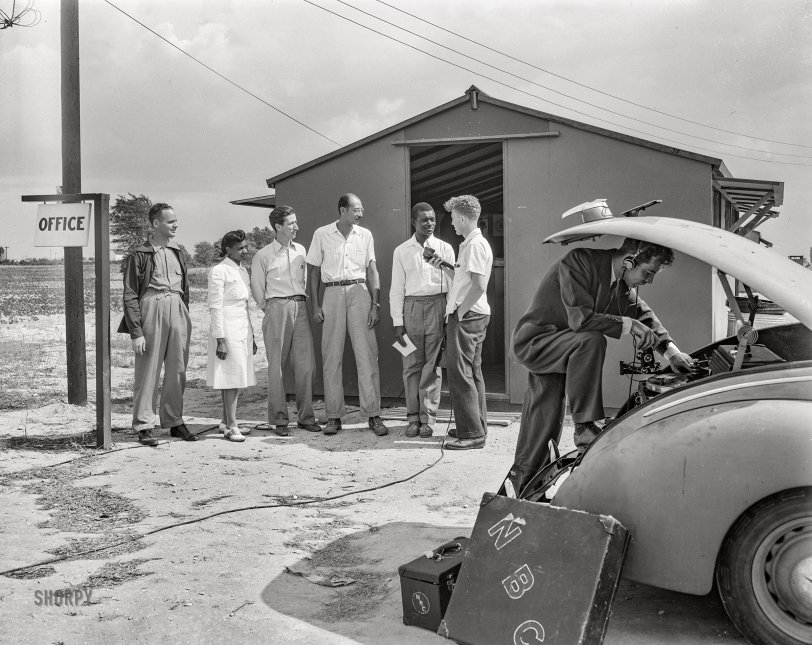


Framed or unframed, desk size to sofa size, printed by us in Arizona and Alabama since 2007. Explore now.
Shorpy is funded by you. Patreon contributors get an ad-free experience.
Learn more.

- Roll your own
- Rugged and real!
- A Charles Purcell - Mama Cass Connection
- Uncle SAAM
- Obfuscation
- One Chocolate Soldier rode away
- Victor Marquis de la Roche
- The Little House Across Way ...
- Vanderbilt Gates
- Vanderbilt Mansion
- You can still see that gate
- Withering heights for me
- So Jim,
- Top Heavy
- Re: Can't Place It.
- Bus ID
- Since you mention it
- The White Pages ?
- Moonlight Tower
- 1907?
- Fire(men) and Water
- Can't Place It
- Can anyone
- Wings
- Where's Claudette and Clark?
- Overbuilt Rolodex
- One song
- Give Me Wings Please!
- PRR
- Pinball Wizards
Printporium
FSA to NBC: 1942

June 1942. Bridgeton, New Jersey. "National Broadcasting Company, making a record for national use, at FSA agricultural camp for workers, many migrants, employed at Seabrook Farms. Man holding paper is a member of the camp's governing council; camp nurse, Miss Mary Alsop, at left." Photo by John Collier for the Farm Security Administration. View full size.
Where Have You Gone, Joe DiMaggio?
Interesting picture that evokes an optimistic, can-do feeling of team spirit, common goal, mutual respect and racial harmony. Where have those things gone?
I wonder what the two posters on the interior office wall depict.
Making a “record”
Not in the jukebox sense - they're recording an interview on location for eventual radio broadcast. No tape recorders in the US yet - the Germans had them all.
The long way there
I'm impressed NBC is making a record in the trunk of a car. Given most records were and are made in sound studios, outside conditions, no doubt, had to be just right. The record in this case is being made maybe 15-feet behind the broadcaster; so why does the microphone cord run off the left side of the photograph?
A portable PRESTO disc recorder
In the trunk of the car the sound engineer is recording the interview using a Presto disc recorder, in his hand he is holding the microscope (Presto type 125-A) dedicated to check the condition of the cutting needle and to judge the depth and quality of the record groove.
Standard coupe
A '38 Ford Standard Coupe had a cavernous trunk put to good use here for the recording equipment. DeLuxe would have a tail light on the side in view. Bootleggers loved the giant trunk and the peppy V8 motor.
FSA under pressure
In June 1942, the Farm Security Administration was in need of positive publicity.
American conservatives, who had always regarded agricultural camps like the one pictured as the entering wedge of socialism, argued that the wartime manufacturing boom rendered the FSA obsolete. After Republican gains in the 1942 election, the Roosevelt Administration and Congress significantly reduced the FSA; the famous photographic unit that Collier worked for was transferred into the Office of War Information, then disbanded in 1944.
In 1946, what was left of the FSA was transformed into the Farmers Home Administration, with a mission to help secure financing for purchases of farms, particularly by veterans. The FHA, in turn, was greatly expanded as part of Lyndon Johnson's war on poverty, and lasted until 2006, when it was transferred into the Department of Agriculture's USDA Rural Development.
Tuck your shirt in, kid
I know: you're thinking "It's only an audio, no one can tell"
They can tell.
























On Shorpy:
Today’s Top 5